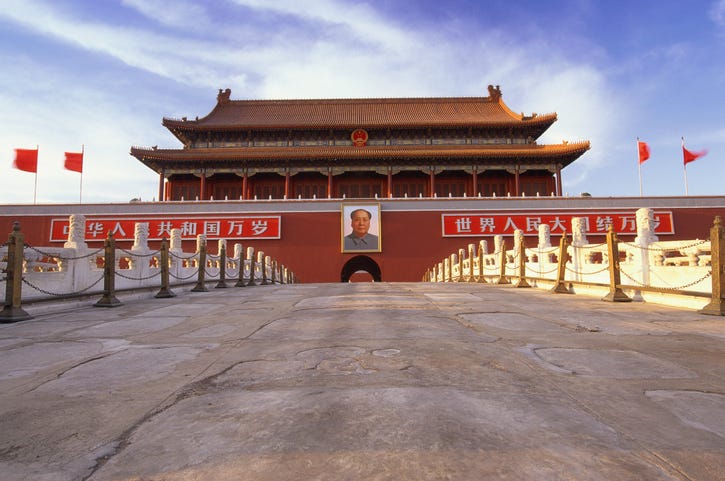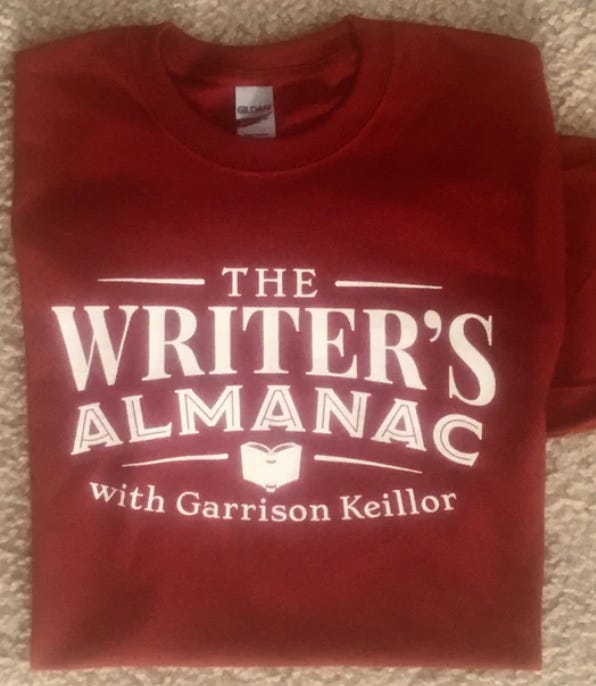TWA from Sunday, June 4, 2017 “For No Good Reason” by Twyla M. Hansen from Rock. Tree. Bird. © The Backwaters Press, 2017.
ORIGINAL TEXT AND AUDIO - 2017
On this date in 1896, a young electrical engineer named Henry Ford completed, and successfully tested, his first experimental automobile. He called it the "Quadricycle," because it rolled around on four bicycle tires. He'd been working on it for two years, out in the shed behind his house on Bagley Avenue in Detroit. It was finally ready to test when he hit an unexpected snag: It was too wide to fit through the workshop's door. Ford took an ax to the doorframe and the surrounding bricks, and was soon rolling down Grand River Avenue.
The Quadricycle had a two-cylinder, four-horsepower engine and could achieve speeds up to 20 miles per hour. It had two gears and no brakes. It ran on pure ethanol, and it was steered by the means of a tiller, like a boat. It wasn't much to look at, just a 500-pound skeleton with a steel frame and no body. But the first test drive was a success.
The first Pulitzer Prizes were awarded on this day in 1917. Laura Richards and Maude Elliott won the prize for biography, with their book about the 19th-century writer and suffragist Julia Ward Howe. Jean Jules Jusserand, the French ambassador to the United States from 1902 to 1925, won the prize for history: With Americans of Past and Present Days. Herbert B. Swope of the New York World won the prize for journalism, and when he picked up his award, said: “I cannot give you the formula for success, but I can give you the formula of failure — which is try to please everybody.”
It was on this day in 1989 that Chinese troops stormed Beijing's Tiananmen Square to crack down on students conducting pro-democracy demonstrations. The demonstrations had begun months earlier, after the government accused them of planning a coup d'état. They drew thousands of supporters from three dozen universities and staged hunger strikes and sit-ins. The Chinese government declared martial law, and troops approached the square with tanks in the late evening of June 3.
Ordinary workers had gathered along the nearby roads. They had been demonstrating in support of the students for weeks, and they crowded into the streets to block the advance of the tanks toward the square. Though the event would come to be called the Tiananmen Square massacre, almost all the people killed were the ordinary people in the streets outside the square. Violence broke out around midnight on this day in 1989, with some people throwing rocks and Molotov cocktails at the troops, and the troops responding with gunfire.
Students inside the square could hear gunfire in the distance, and they assumed that they were about to be massacred. Many of them began to write out their wills. Troops entered Tiananmen Square around 1:00 a.m. A loudspeaker announced that a serious counterrevolutionary rebellion had broken out and everyone was ordered to leave the square immediately. The darkness was filled with the sound of breaking glass and gunfire, and the light of red flares rising and falling in the air.
Soldiers had surrounded the perimeter of the square, and the students expected that they would kill everyone at the center. Around 4:00 a.m., all the lights went out, and it got quiet. The students debated whether or not they should surrender. They heard the engines of the tanks start up, and finally they made the decision to evacuate. At that time, there were only a few journalists left in the square, and erroneous stories were later reported that the students had all been killed. In fact, almost all the students survived.
One of the few journalists who witnessed the evacuation said: "Many [of the students] had tears rolling down their cheeks. All looked shaken; many were trembling or unsteady on their feet. But all looked proud and unbeaten. One group shouted, 'Down with the Communist Party!' [It was] the first time I had ever heard this openly said in China." The students left a message written on the wall behind them that said, "On June 4, 1989, the Chinese people shed their blood and died for democracy."
The violence continued in and around the square for the rest of the day. The famous photograph of a student staring down a tank was taken by an American Associated Press photographer named Jeff Widener. He went to the top of a hotel near the square and began to take pictures of the tanks clearing the last remnants of people from the streets. Then he saw one man walk up to a tank and stand in its path, refusing to move. He took several photographs and then the man was grabbed by bystanders and pulled out of the tank's path. Widener asked another journalist to hide the film in his underwear to smuggle it out of the country.
The identity of the protester in the photograph is not known with any certainty. We don't know if he's alive or dead, in prison or free, but he's been called one of the most influential revolutionaries of the 20th century.
Be well, do good work, and keep in touch.®
SUPPORT THE WRITER’S ALMANAC WITH THE PURCHASE OF OUR T-SHIRT - CLICK HERE






How do sign up a friend for the daily LLC letter?